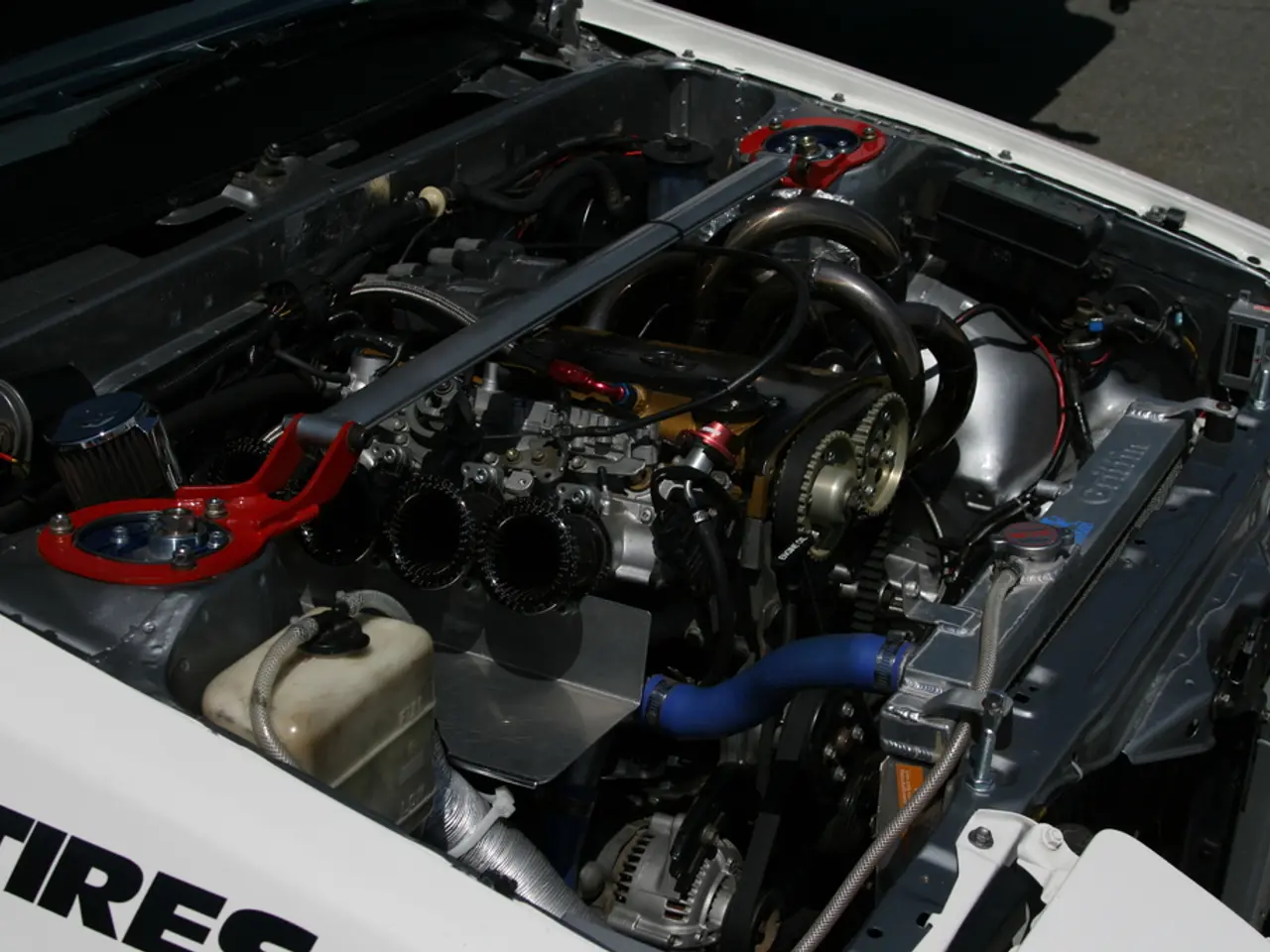Fast charging sodium batteries are made possible through the co-intercalation process
In a groundbreaking development, researchers have discovered that co-intercalation in cathode materials contributes to the creation of high-efficiency, fast-charging sodium batteries. This process allows for the simultaneous insertion of sodium ions and solvent molecules into layered cathode structures, enhancing charge transfer kinetics and facilitating faster charging and discharging processes.
The co-intercalation process is a significant departure from traditional battery knowledge, as it was once considered undesirable due to its tendency to cause rapid battery failure. However, recent investigations have revealed that this mechanism offers a vast chemical landscape for designing novel layered materials for diverse applications.
Co-intercalation involves organic solvent molecules and sodium ions occupying the space between cathode material layers. This process reduces structural strain and stabilizes the cathode during charge-discharge cycles, enhancing cycle life and overall battery stability. By avoiding the typical lattice degradation that occurs during pure sodium ion intercalation, co-intercalation allows layered cathode materials (such as sodium manganese oxides) to maintain integrity under fast cycling conditions.
Key benefits of co-intercalation for sodium-ion batteries include increased ionic mobility, improved cathode stability, and new material design pathways. Solvent molecules help expand interlayer spacing, facilitating faster sodium ion movement, which is critical for high-power and fast-charging applications. Co-intercalation also reduces structural damage and mitigates common defects, helping sustain battery lifespan during rapid cycling.
The latest findings in the field of batteries are shaping the battery market, as this co-intercalation mechanism offers a promising avenue for engineering sodium-ion batteries that combine sustainability (due to abundant sodium resources) with the fast charging and high efficiency demanded by modern energy storage needs.
The study, financed by Helmholtz-Zentrum Berlin and Humboldt-University, was conducted as part of a joint research group on operando battery analysis. The research team, led by Philipp Adelhelm, has demonstrated that co-intercalation can be a reversible and fast process for cathode materials in Na-ion batteries.
The opportunities for joint research projects in Berlin have been expanded with the recently announced Berlin Battery Lab between HZB, HU, and BAM, providing a platform for further advancements in this exciting field. The performance of batteries depends on how ions are stored in electrode materials and whether they can be released again. By understanding and harnessing the potential of co-intercalation, researchers are one step closer to creating batteries that can charge quickly and operate efficiently over many cycles.
The discovery of co-intercalation in cathode materials for sodium batteries revolutionizes the battery industry, as it offers a new approach to designing materials for health-and-wellness (battery lifespan), fitness-and-exercise (fast charging and discharging), and technology (improved sodium ion mobility and reduced structural damage). The finance sector is also interested, as this mechanism presents potential for sustainable and high-performing energy solutions that cater to the growing need for fast charging and high-efficiency energy storage. The research in this field, such as the study financed by Helmholtz-Zentrum Berlin and Humboldt-University, is further facilitated by technological advancements, like the Berlin Battery Lab, which expands opportunities for joint research projects and accelerates the development of innovative battery solutions.




